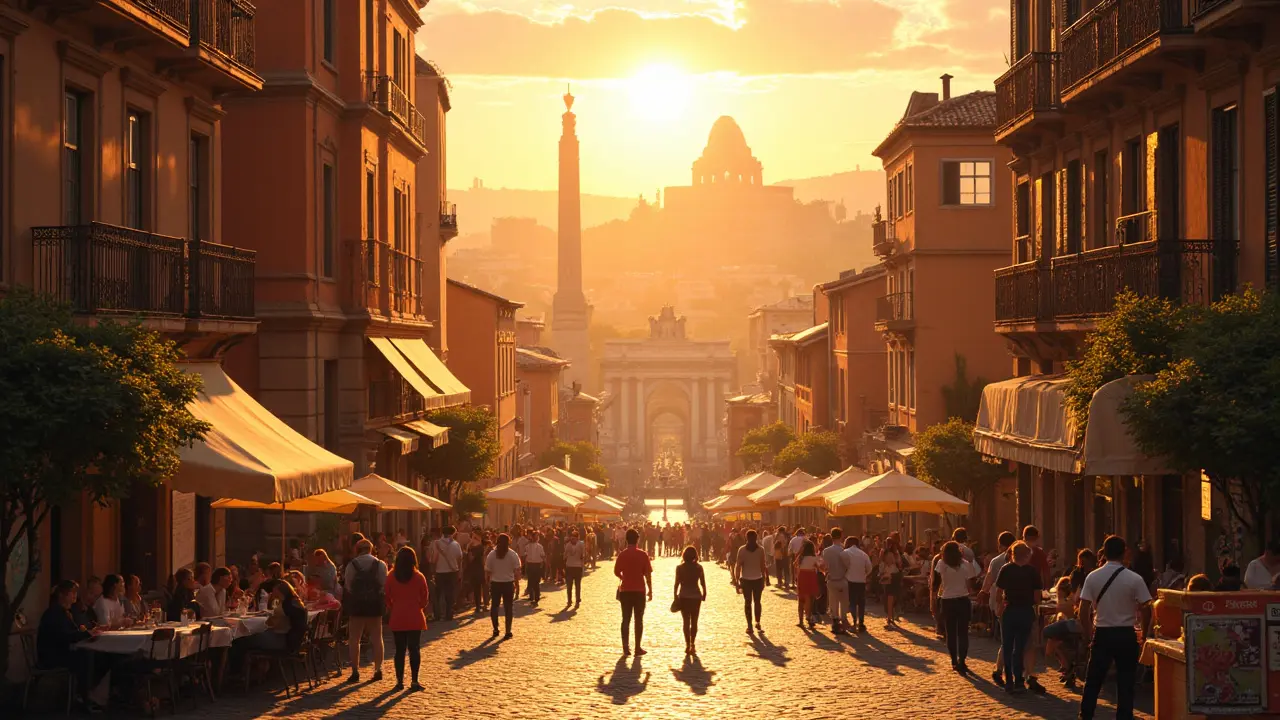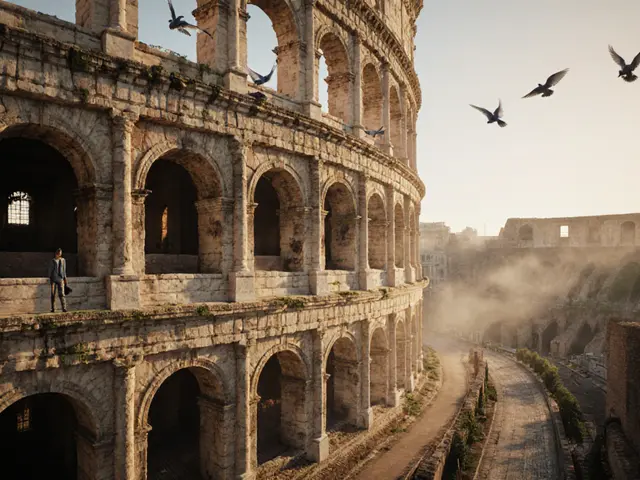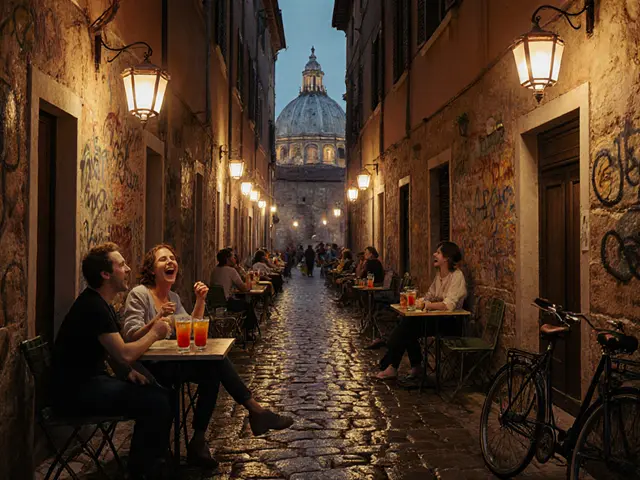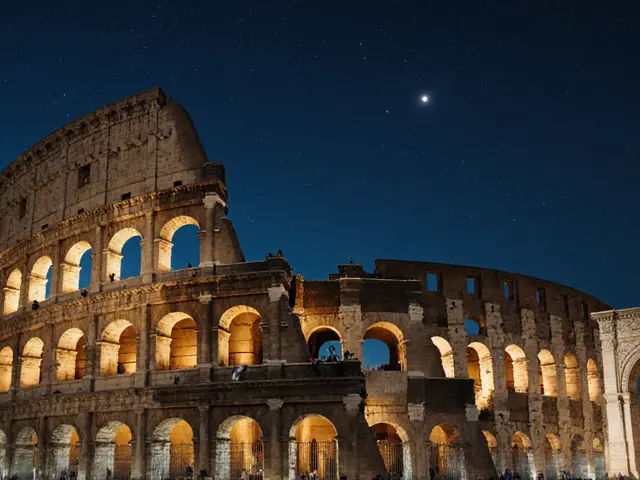If you think Rome is just about the Colosseum, you’re in for a surprise. The city packs something jaw-dropping around nearly every corner—grand ruins, wild stories, and late-night gelato on cobblestoned piazzas. The trick? Figuring out what’s actually worth your time, especially if you’re dealing with crowds and tight schedules.
Honestly, you don’t need to hit every single historical site to feel like you’ve “done” Rome. Focus on a handful of stunning spots and do them right. A lot of travelers waste hours in lines they didn’t have to stand in, pay too much for tickets they could’ve snagged cheaper, or miss out on awesome streets just because they’re not on the big tourist maps.
Here's what the savvy travelers know: you can soak up just as much Roman magic walking through the shady lanes of Trastevere as you can in a packed relic. And lunch? It's a sightseeing event all on its own if you pick the right spot. Let’s get into exactly where you should go, what you shouldn’t miss, and a few simple tricks to make your trip feel like pure vacation instead of a sightseeing rush.
- Must-See Ancient Landmarks
- Hidden Gems Beyond the Classics
- Best Spots for Food and People-Watching
- Rome Hacks: Save Time & Stress
Must-See Ancient Landmarks
If you're hitting Rome for the first time, you’ll want to start with the big names—these sights are legendary for a reason. The Colosseum tops every list, and for good reason. It’s almost 2,000 years old and once held 50,000 spectators for gladiator fights. Skip the lines by booking tickets online ahead of time or, even better, grab a combo ticket that covers the Roman Forum and Palatine Hill too. Early morning visits mean fewer crowds and less waiting around in the sun.
Next up is the Roman Forum. It’s not just a pile of ruins—this was the pulsing heart of ancient Rome, where you’ll wind past centuries-old arches, basilicas, and temples. The real trick here: download an audio guide or use a free walking app. Otherwise, it’s easy to wander without knowing what you’re looking at. The views from Palatine Hill above the Forum are killer—bring your camera because you can see across all of Rome.
The Pantheon gets less hype than the Colosseum but shouldn’t be skipped. It’s the best-preserved building from ancient Rome, and yes, the massive dome is still the largest unreinforced concrete dome in the world. Pro tip: entrance is now ticketed, so book ahead for busy months (usually spring and summer). Step inside and just stare up—the hole in the middle of the dome (the ‘oculus’) still blows people’s minds.
- For a cameo with Caesar, check out Largo di Torre Argentina. It’s where Julius Caesar was killed, and now it’s a cat sanctuary too (yep, cats ruling ancient ruins). Free and quick but totally worth it.
- If you want something with fewer crowds, try Baths of Caracalla—it’s less busy, but the sheer size of the ruins gives you a taste of how Romans chilled out, ancient spa style.
Rome’s ancient landmarks aren’t just for history buffs. They show off how much this city has seen, and you don’t need a pile of textbooks to appreciate them. Wear comfy shoes because you’ll put in some steps. And if you’re short on time, focus just on a couple of these sights and dig in deep instead of racing through all of them.
Hidden Gems Beyond the Classics
Rome isn’t just about the top sights and crowded squares. Once you’ve seen the big names, there’s a whole other side of the city that feels quieter, weirder, and honestly way more authentic. These are the places where locals actually hang out and where even the pizza tastes better without a line out the door.
Start with the Aventine Keyhole. Yup—it’s a real keyhole on Aventine Hill, right by the Piazza dei Cavalieri di Malta. Peek through and you’ll catch a perfectly framed view of St. Peter’s dome. Early mornings are best if you want to skip the selfie crowd.
Hop over to the Centrale Montemartini Museum, which might sound like just another old building but it's actually an old power plant turned art museum. There are ancient Roman statues set up right between big, heavy machinery. It’s weirdly cool, and far less packed than places like the Vatican Museums.
- Via Appia Antica: Take a bike or rent a scooter out here and cruise along ancient Roman stones—straight up, actual stones from 2,000 years ago. You’ll pass catacombs, tiny churches, and wildflowers. Sundays are car-free, and that’s when you get the best vibe.
- Testaccio Market: Skip the souvenir traps and head to Testaccio for real-deal food. Grab a sandwich from Mordi & Vai—they’re famous for stuffed rolls with slow-cooked Roman recipes. If you go around noon, you’ll eat with locals instead of tourists.
- Coppedè District: This small neighborhood barely looks like Rome at all. The buildings are all art nouveau with fairy-tale turrets and wild mosaics. No crowds here—just you and a camera, guaranteed.
Not sure if you’re missing something big? Check out this table for a quick hit on how these hidden gems compare to the most famous sights:
| Spot | Entry Fee | Typical Wait | Best Time to Visit |
|---|---|---|---|
| Colosseum | €18 | 60+ mins peak | Early morning |
| Aventine Keyhole | Free | 5-10 mins | Before 9 AM |
| Centrale Montemartini | €11 | Walk right in | Anytime |
| Via Appia Antica | Free (unless entering catacombs) | None | Sunday |
| Testaccio Market | Free entry, €5-10 food | None | Noon |
If you want to dodge crowds, spend less, and brag about photos no one else has, carve out at least half a day for these spots. Rome’s magic isn’t just ancient—it’s weird, tasty, and hiding in plain sight.
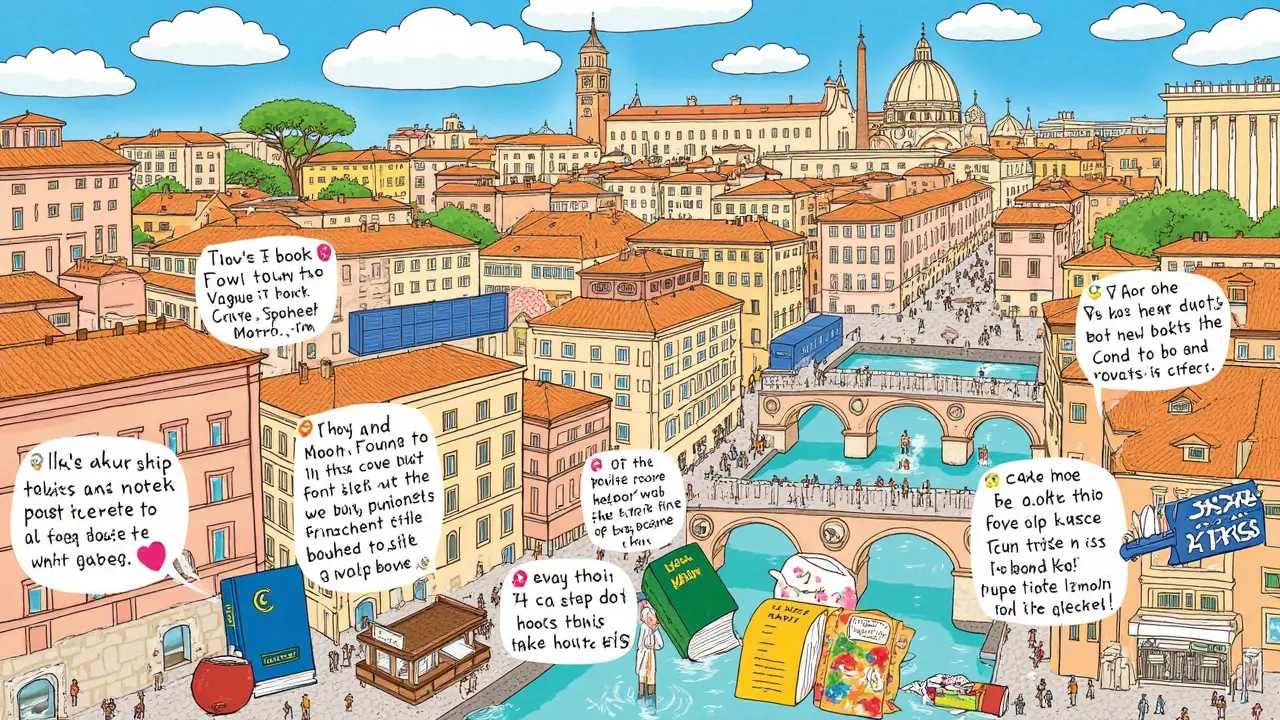
Best Spots for Food and People-Watching
Rome isn’t just about ancient stones—it’s a city where eating and people-watching should be on your must-do list. Some areas crush it when it comes to both. Head over to Trastevere in the evening, and you'll get the perfect vibe: buzzing bars, tiny restaurants, crowds spilling out onto the cobblestones, and locals mixing with tourists. The main piazza, Piazza di Santa Maria in Trastevere, makes a laid-back scene for aperitivo. Grab a spritz, snag an outside table, and soak up the action.
If you want more classic Rome without the chaos, Campo de’ Fiori is your spot midday. By morning, the square hosts a busy food market, but after noon, it shifts into café mode. You’ll see a mix of office workers, camera-toting travelers, and regulars grabbing quick espressos or thick Roman pizza slices. Taverna Campo de’ Fiori is a good call for traditional pasta—try their carbonara for a taste that’s a world away from what most places call ‘authentic’.
The Jewish Ghetto pulls in foodies for its famous artichokes, especially in spring. Look for Nonna Betta or Ba’Ghetto—these are real-deal kitchens with recipes that go back generations. Outdoor seating is limited, but the people-watching here involves a mix of locals, food critics, and the odd celebrity craving Roman-Jewish favorites.
For a front-row seat to classic Roman chaos, Piazza Navona always delivers. Yes, there are tourists, but the energy here is unbeatable. Many cafes let you linger with a pastry and a coffee. Just keep in mind, prices go up the closer you sit to the fountains, but you’re paying for that prime view.
Here’s a Rome food tip: Italians eat late. Peak dinner time is around 8:30 pm, and lunch stretches till 3 pm. If you want a table at busy spots, book ahead or aim for early or late seatings.
Curious about cost? Here’s what you might expect at some of these top people-watching spots:
| Neighborhood | Coffee (€) | Pasta (€) | Aperitivo Drink (€) |
|---|---|---|---|
| Trastevere | 1.50–2.50 | 10–14 | 7–10 |
| Campo de’ Fiori | 1.50–2.00 | 9–13 | 6–9 |
| Jewish Ghetto | 1.30–2.00 | 12–16 | 6–8 |
| Piazza Navona | 2.00–3.00 | 13–18 | 8–12 |
Quick tips:
- Don’t sit if you’re in a hurry—Rome’s cafes are for lingering.
- Standing at the bar is cheaper than sitting.
- Order house wine by the carafe—it’s way better value than bottles.
- Keep an eye out for daily specials, especially in market neighborhoods.
Rome Hacks: Save Time & Stress
Everyone wants to see as much of Rome as possible, but nobody wants to waste half their trip jammed in lines or missing out because the city’s just overwhelming. So, what actually works? Here are tried-and-true tips that locals, guides, and veteran travelers swear by.
- Buy skip-the-line tickets. The Colosseum, Vatican Museums, and St. Peter’s Basilica see lines even at 8 AM. Snagging skip-the-line tickets online is a lifesaver and often doesn’t cost much more than standard entry.
- Visit the big sights early or late. The Colosseum gets mobbed by mid-morning, but if you’re there right when it opens—or snap sunset shots—it’s way more relaxed. At the Vatican Museums, Friday evenings in summer are surprisingly uncrowded.
- Google Maps ignores Rome’s random street closures. Download offline maps, and if you’re using public transport, always check ATAC (Rome’s transit app) for changes or strikes. Rome has a strike reputation, with about 30 transport strikes in 2024 alone—always have a backup plan.
- Carry small change for bus tickets, or better yet, pick up a Roma Pass. It’s good for free or discounted entries plus city travel—saving both money and hassle.
- Eat and recharge away from major tourist alleys. Places more than 500 meters from sights serve better food, quick, and at local prices. Italians typically eat lunch from 1-3 PM, so either get in before the rush or after.
If you’re traveling with kids or just want a break from standing, the 620 and 87 buses connect the biggest Rome sights. Cheap, quick, and a lot more local than taxis.
“If you want to get the most out of Rome, plan like you’ll return—there’s no way you can see everything in just a few days, and you’ll enjoy it more if you don’t even try,” advises Rick Steves, well-known travel expert.
Here’s a glance at how much time you’re likely to save with simple planning:
| Sight | Wait Without Prep | With Hacks |
|---|---|---|
| Colosseum | 1-2 hours | 20-30 min (skip-the-line) |
| Vatican Museums | 1.5-3 hours | 15-20 min (after 3 PM or Friday night) |
| Forum/Palatine Hill | 45-60 min | Walk right in with combo ticket |
Remember, Rome rewards the curious but prepared traveler. Invest a little time in planning and you’ll avoid most headaches—and probably have the energy for a late-night gelato after all.
